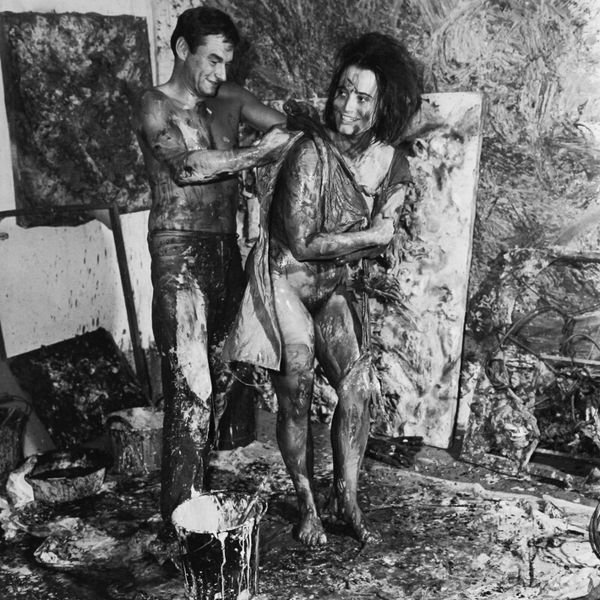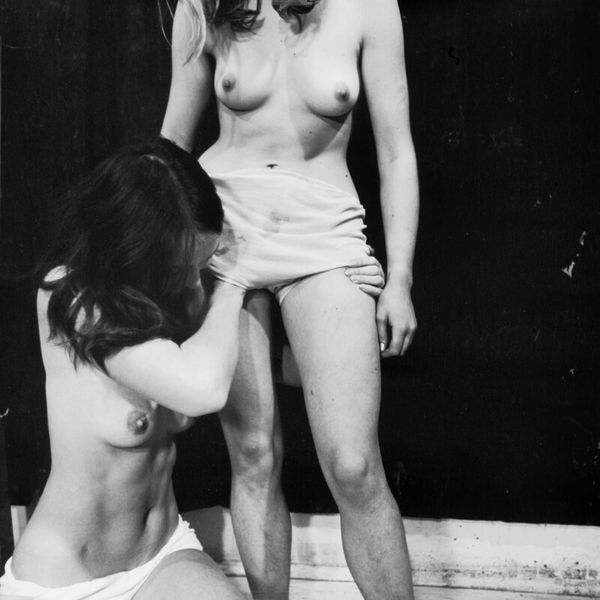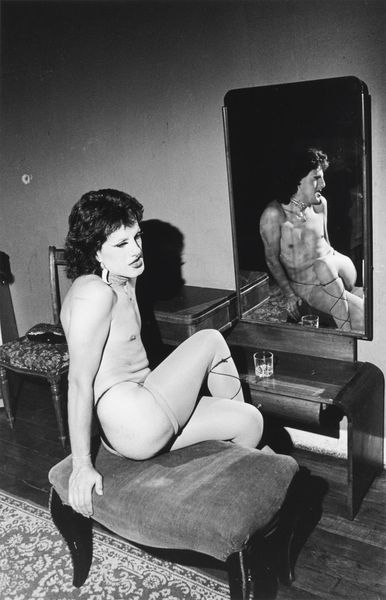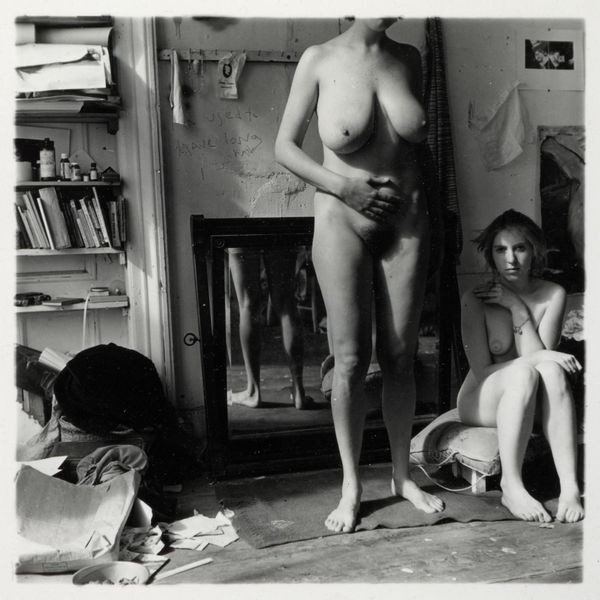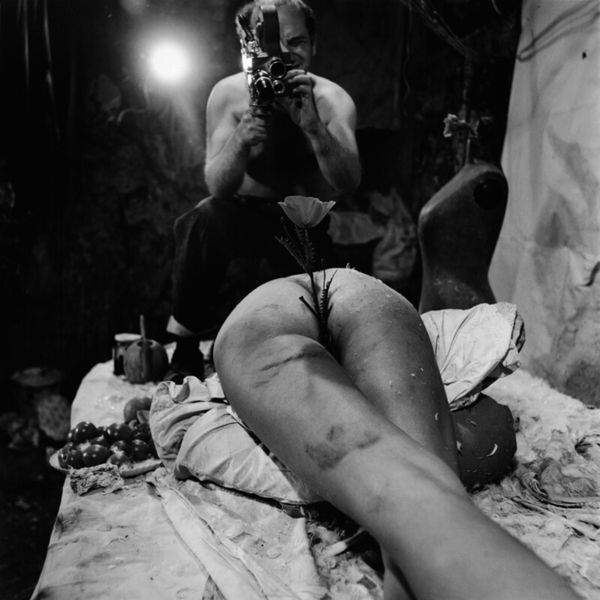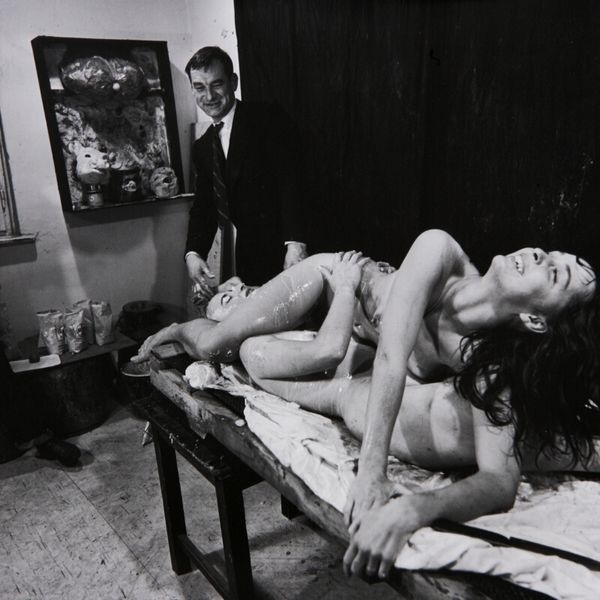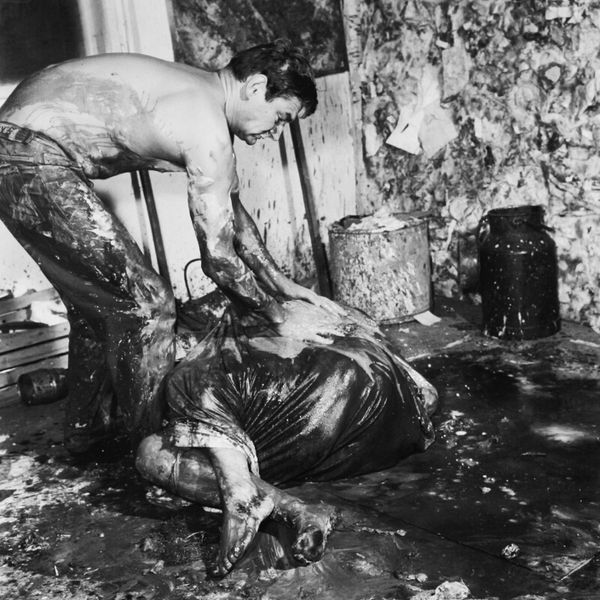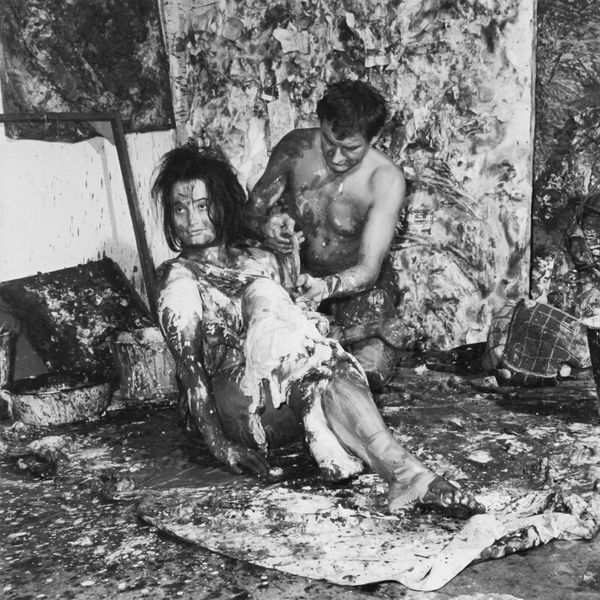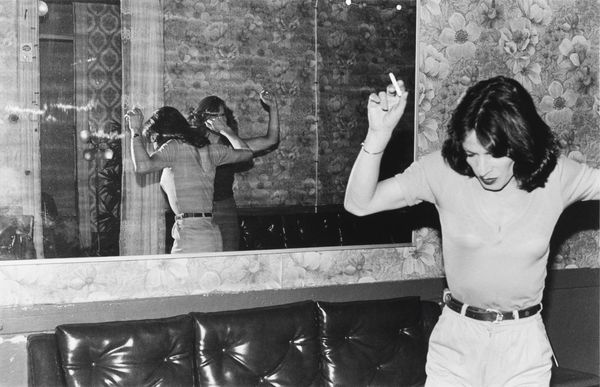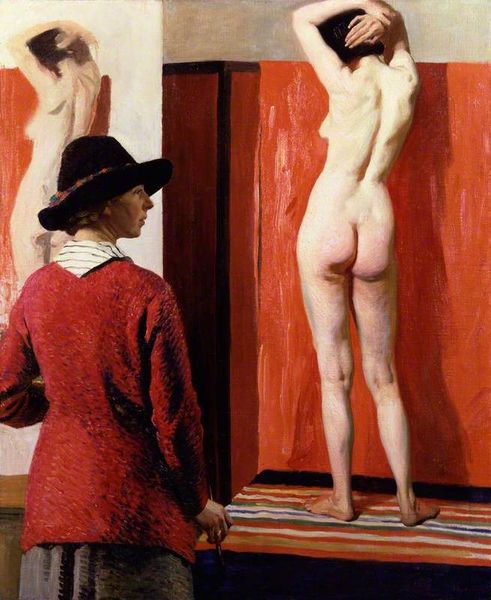
matter-painting, performance, photography
#
matter-painting
#
performance
#
actionism
#
photography
#
body-art
#
black and white
#
monochrome
#
nude
#
monochrome
#
exhibition
Copyright: Otto Muehl,Fair Use
Curator: This photographic documentation captures Otto Muehl's 1963 "Versumpfung Einer Venus 2", translating roughly to "Swamping of a Venus 2," part of his actionist body of work. The picture is in black and white, capturing a raw energy, I find it immediately confrontational. Editor: It is that exactly! There's something inherently transgressive about it, a disruption of the idealized female form we often associate with the Venus archetype. The figure becomes a canvas, a surface for material exploration. You feel that material presence even in the picture. Curator: Indeed. Consider the social context. Muehl was part of the Viennese Actionism movement, which radically challenged societal norms. They often used their own bodies and primal substances, like paint and bodily fluids, to create provocative performances. Look at the man covering a woman in a large quantity of paint or another sort of goopy substance and how they create a 'matter-painting' in action. Editor: It goes further, doesn't it? This 'swamping' evokes associations with ritualistic defilement, maybe even sacrificial rites. It takes Venus, the Roman goddess of love and beauty, an icon of desire and reduces her to mere stuff, being worked. This also resonates with classic mythological 'creation of humans' in the mud or clay as base matter, worked by an all powerful sculptor (Zeus). The substance becomes charged. Curator: Absolutely. The materials themselves are critical. What is that material coating her? It could be paint, but it takes on other connotations—like crude oil, like some vile substance coating a fragile object with dangerous results. The monochrome amplifies this, erasing nuance and heightening the contrast between the pure and the defiled. How does the viewer 'consume' it? What is its symbolic presence, it pollutes beauty, despoiling it? Editor: Perhaps this 'Versumpfung', this "Swamping of Venus", shows a broader cultural anxiety playing out, or maybe the memory of an archetype fading? Consider how classical depictions of Venus always have soft flowing lines but how the opposite occurs here, as those lines disappear to a goopy amorphous mass. This artistic expression blurs cultural memory as the form's symbolic essence loses it's essence due to that goo being applied on that form and us not recognizing beauty there, only something disgusting. Curator: The making of this photograph must have been chaotic! Thinking through this, it seems that, in the act of desecration, there’s an inherent commentary on artistic processes, where something gets created through labor and destruction. Thank you for your thoughts and insights here, a powerful and unsettling glimpse into mid-20th-century artistic experimentation and boundary pushing through creation/desecration. Editor: The potency is in the way it disturbs ingrained expectations and ideas through the application of the materials. These sorts of archetypes have such an imposing effect, as that image may never get viewed the same way for eternity. This artwork shows those actions playing out. The piece leaves you unsettled with questions regarding beauty standards, social commentary, performance and art's meaning itself.
Comments
No comments
Be the first to comment and join the conversation on the ultimate creative platform.
